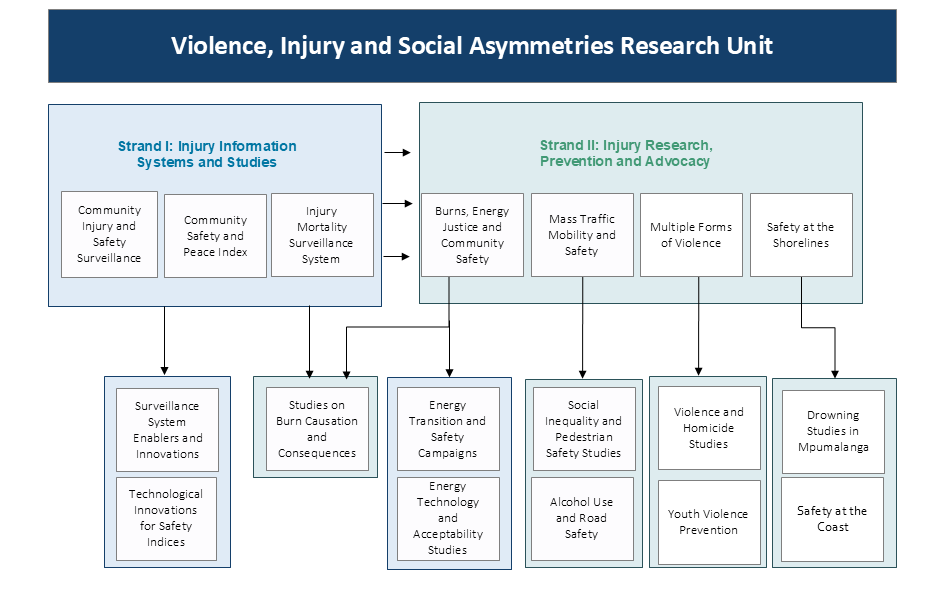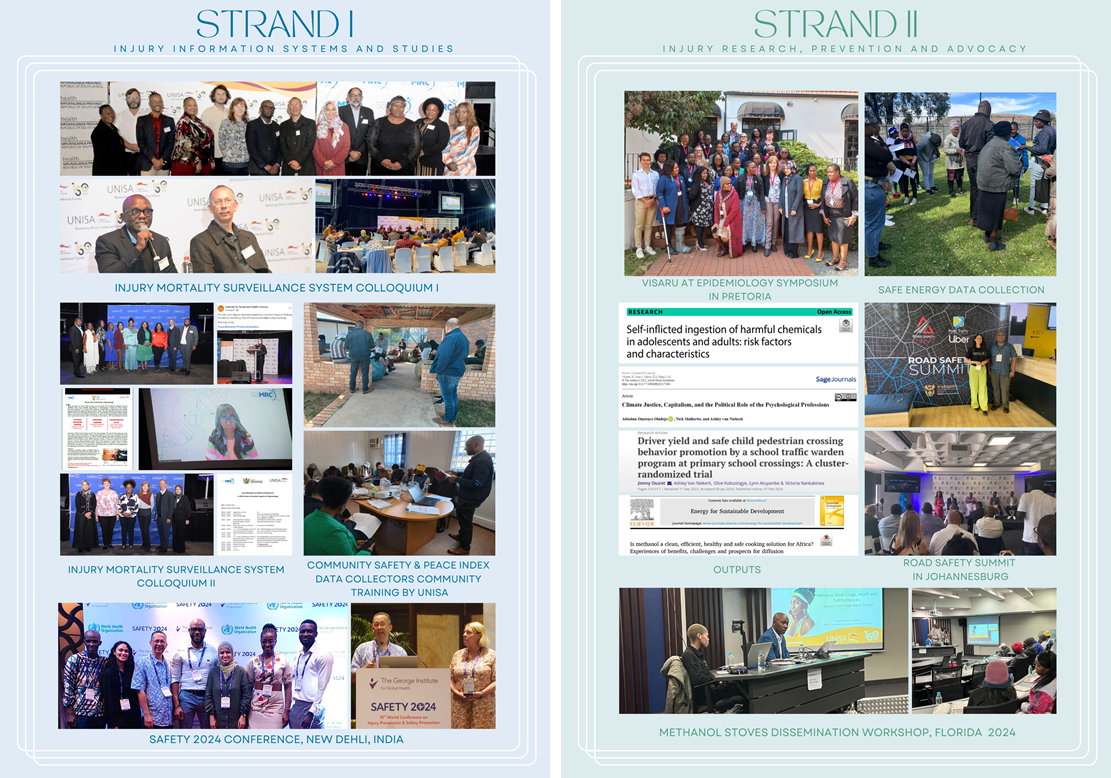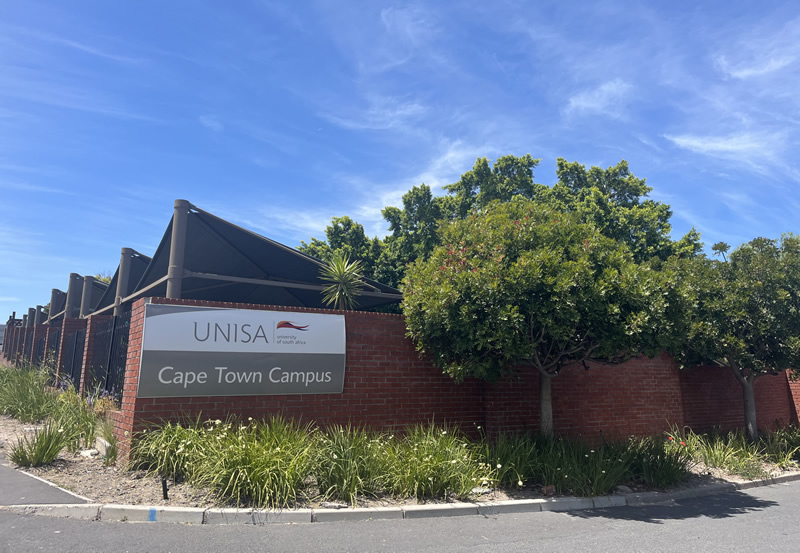The Violence, Injury and Social Asymmetries Research Unit (VISARU) was designated an Extramural Research Unit by the SAMRC in 2024. VISARU is funded by the SAMRC and Unisa Strategic Funds (from the Unisa Strategy, Planning and Resource Committee) from 2024 to 2028. VISARU is responsive to Unisa’s health studies, energy and marine catalytic niche research priorities, with a focus on violence and injury. VISARU studies focus on the epidemiology, causality, impact and preventability of injuries, with a focus on burns, violence, traffic and water injuries.
The Unit has a special interest in the socio-structural determinants of these injures, including family and community poverty, economic inequality, energy poverty, gender inequality and toxic masculinities, and historical community marginalisation. The Unit draws on public health, social science and environmental disciplinary traditions to enable a critical social justice approach to the promotion of safety and wellbeing. VISARU hosts various innovative research platforms to study these drivers of injury and safety which also serve as platforms for postgraduate studies. The Unit promotes the development of evaluation tools and hosts information systems to support such research. It uses this research to champion innovative prevention and containment efforts and study the factors that enable effective interventions and community adoption. VISARU leads or aligns with priority advocacy initiatives through strategic national and continental partnerships.




